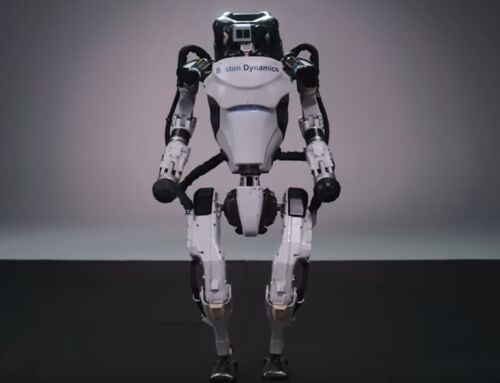World’s tiniest engine, to power microscopic robots, is a million times smaller than an ant.
Researchers at the University of Cambridge, have created an engine from gold nanoparticles, exploding into action as part of its heating cycle, to produce amounts of useful work.
Image Credit: Yi Ju/University of Cambridge NanoPhotonics.
The world’s tiniest engine is just a few billionths of a meter in size, uses light to power itself.
It could form the basis of future nano-machines that can navigate in water, sense the environment around them, or even enter living cells to fight disease.
The prototype device is made of tiny charged particles of gold, bound together with temperature-responsive polymers in the form of a gel. When the ‘nano-engine’ is heated to a certain temperature with a laser, it stores large amounts of elastic energy in a fraction of a second, as the polymer coatings expel all the water from the gel and collapse. This has the effect of forcing the gold nanoparticles to bind together into tight clusters. But when the device is cooled, the polymers take on water and expand, and the gold nanoparticles are strongly and quickly pushed apart, like a spring. The results are reported in the journal PNAS.
Dr Tao Ding from Cambridge’s Cavendish Laboratory, and the paper’s first author, said:
“It’s like an explosion. We have hundreds of gold balls flying apart in a millionth of a second when water molecules inflate the polymers around them.”
Study co-author Dr Ventsislav Valev, now based at the University of Bath, said:
“We know that light can heat up water to power steam engines. But now we can use light to power a piston engine at the nanoscale.”
via telegraph
source University of Cambridge






Leave A Comment